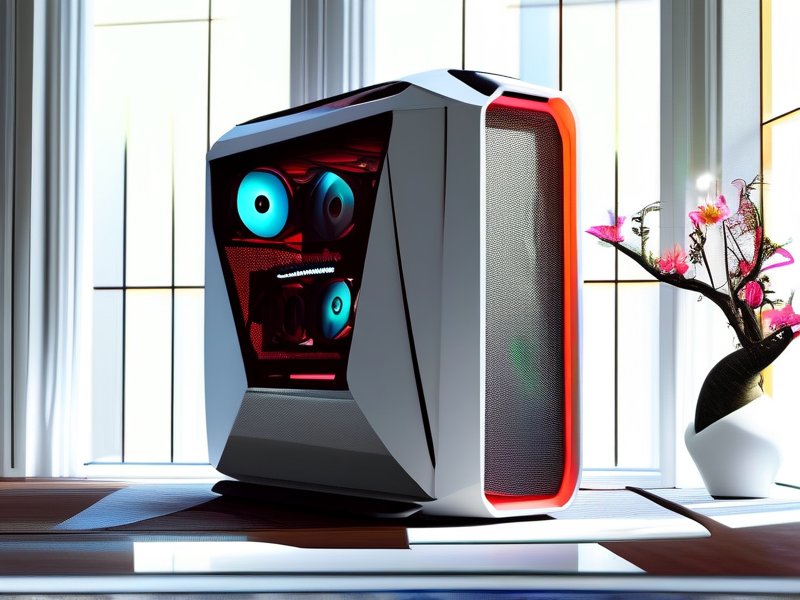
What Is a Cloud PC and How Does It Work?
In an increasingly mobile world, the concept of a workstation no longer requires a physical desktop tied to a single location. Cloud PCs—virtual workstations hosted on remote servers—are revolutionizing how we access and use computing resources. By leveraging cloud infrastructure, these platforms enable users to stream a fully functional desktop environment from anywhere, using nothing more than an internet connection and a compatible device. This shift marks the next evolution of computing, blending the power of traditional workstations with the flexibility of cloud technology.
At its core, a cloud PC operates through virtualization: a single physical server hosts multiple virtual machines (VMs), each acting as a personalized desktop. Key components include:
- Virtual Desktop Infrastructure (VDI): A framework that provisions and manages desktop environments in the cloud.
- Edge Computing: Reduces latency by processing data closer to the user, ensuring smooth performance even over weaker connections.
- Scalability: Users or organizations can easily upgrade or downgrade computing power based on needs, from basic document editing to high-end rendering.
For example, Edgenode’s Cloud PC (https://www.edgenode.cc/pc.html) offers flexible configurations, allowing users to select CPU, GPU, and storage resources tailored to their workloads, whether they’re running CAD software, video editing tools, or business applications.
Key Benefits of Next-Gen Cloud Workstations
The shift to cloud PCs delivers transformative advantages that cater to both individuals and enterprises:
1. Unrestricted Accessibility
With a cloud PC, your desktop follows you wherever you go. Access critical tools on a laptop during a commute, a tablet at a client meeting, or a smartphone during a flight. This eliminates the need to carry bulky hardware or worry about compatibility issues. For remote teams, it ensures seamless collaboration, as everyone uses the same environment regardless of location.
2. Enhanced Security and Compliance
Data stored in the cloud benefits from enterprise-grade encryption and disaster recovery protocols. Unlike physical devices, which can be lost or stolen, sensitive information remains secure in a centralized, managed environment. Cloud providers like Edgenode also comply with standards such as GDPR and HIPAA, making it ideal for industries handling regulated data.
3. Cost Efficiency
Traditional workstations require upfront hardware costs, maintenance, and eventual replacements. Cloud PCs operate on a subscription model, reducing capital expenditures and allowing organizations to scale resources dynamically. For instance, a marketing agency could spin up high-performance VMs during peak campaign periods and downsize afterward, paying only for what they use.
4. Future-Proofing Your Workflow
Cloud providers handle software updates, security patches, and hardware upgrades automatically. This means your environment stays optimized without manual intervention. Need a new GPU for rendering? Simply upgrade your plan—no hardware swaps required.
Practical Applications and Best Practices
Cloud PCs are versatile tools, but their effectiveness depends on strategic implementation. Here’s how to maximize their value:
Use Cases Across Industries
- Remote Workforces: Enable employees to access company applications securely from home or on-the-go.
- Education: Provide students and educators with powerful tools for simulations, design software, or coding labs without on-premise infrastructure.
- Graphics and Engineering: Run resource-heavy applications like AutoCAD or Adobe Premiere Pro without needing a high-end local machine.
- Gaming: Stream high-end games to low-spec devices using cloud gaming platforms integrated with cloud PC ecosystems.
Tips for Choosing a Cloud PC Provider
Not all cloud PCs are created equal. Consider these factors when selecting a service:
- Performance: Look for providers offering adjustable CPU/GPU configurations, such as Edgenode’s customizable plans for 3D modeling or AI workloads.
- Latency: Opt for providers with edge nodes in your region to minimize lag in real-time applications like video conferencing or gaming.
- Cost Transparency: Avoid hidden fees. Compare pricing models (e.g., pay-as-you-go vs. flat monthly subscriptions).
- Security Features: Ensure encryption, multi-factor authentication, and data sovereignty options align with your compliance needs.
Optimizing Your Cloud PC Experience
To get the most out of your cloud PC:
- Invest in a Reliable Network: A stable internet connection (preferably 50+ Mbps) ensures smooth streaming. Use wired connections for critical tasks.
- Customize Your Environment: Pre-install software, configure settings, and save profiles to reduce setup time across devices.
- Leverage Integration Tools: Sync cloud storage (e.g., Google Drive, OneDrive) and productivity apps directly to your cloud PC for a seamless workflow.
Conclusion
Next-gen cloud PCs are not just a technological advancement—they’re a paradigm shift in how we interact with computing resources. By offering unmatched flexibility, security, and scalability, they empower users to work smarter, collaborate more effectively, and future-proof their operations. Whether you’re a freelancer needing on-demand power or an enterprise aiming to reduce IT costs, platforms like Edgenode’s Cloud PC exemplify the potential of this technology. Embrace the cloud, and let your workstation adapt to your world, not the other way around.
Ready to experience the future of work? Explore Edgenode’s Cloud PC solutions today and transform how you access, use, and grow with your digital tools.
